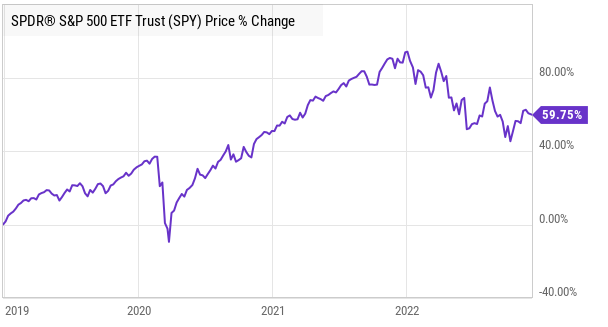Volatility Can Be a Friend or an Enemy
- Alan Brochstein, CFA
- Dec 11, 2022
- 3 min read
How does one make money on Wall Street? A popular adage is true: Good investors buy low and sell high. This isn't the only way to make money, but it sure works. One can also buy high and sell higher or sell low and buy lower.
I think investors probably worry too much about getting the very lowest price on buys or the very highest price on sales. It's just not possible to be perfect on market timing! Whether one is investing on one's own or with an advisor, market-timing can play an important role in how one's account changes in value over time, but there is a lot more to being a successful investor than picking the best times to buy or sell an investment.
Whether one is talking about stocks, bonds or other assets, like oil, gold or cryptocurrencies, securities prices do move around. Stock prices can move a lot in a short period of time. In 2020, the S&P 500, an index of the stocks of the largest companies, set an all-time high as the pandemic was breaking out in China. A month later, the index had dropped by more than a 1/3! The crash wiped out a bit over a year of gains in a month:

As you can see, the stock market recovered in 2020 and set a new all-time high before advancing even further. As bad as the market has performed in 2022, it is still well above the old all-time high before that crash in early 2020. With two large declines in four years, it is still up almost 60% since the low four years ago.
How Price Volatility Can Help
Rapid rises or declines in security prices can actually help investors. "Buying the dip" can work out as can "selling the rip." Of course, they can also not work! A little bit more than two decades ago, Enron and MCI WorldCom were popular stocks that were large, but they both ended in bankruptcy. There are lots of stocks that people buy on the way down that just keep dropping.
Similarly, a stock that goes up a lot over time can draw sellers along the way. These folks end up leaving a lot of money on the table through their actions. Avis Budget Group, the car rental company, rose 456% in 2021 as it increased from $37.30 to a close of $207.37. Selling for a double in April would have felt good, but it would have resulted in a lot worse performance most likely.
Price volatility creates opportunities for investors, but the outcomes are unknown ahead of time. A basic decision many investors must make regards how much stocks to hold relative to bonds. If an investor or his or her manager has a plan to keep the ratio relatively constant, then the investor can sell some bonds and buy some stocks when stocks fall a lot in price. Over time, this could be very helpful, though the investor may have to wait and do more of the trade later at an even better price.
Price volatility can yield extremes in price, which can provide an opportunity for investors to reposition their holdings.
How Price Volatility Can Hurt
While volatile prices can help investors, they can also hurt them. Falling prices can stir fear in investors, who then may reduce their exposure to assets after they decline. If they keep declining, this can be fine, but a second decision could become necessary down the road: repurchase. Selling at what proves to be an extremely low price can be very harmful!
Conclusion
Most investors should probably disregard price volatility. For those who actively trade their portfolios, price movements introduce a chance to trade, but sometimes it doesn't work out. For some, who rebalance their portfolios , big movements can trigger a rebalancing, which can work to the investor's favor. It can also impact the investment of new contributions. For a person that contributes to his or her IRA near the beginning of the year, the returns will be better if prices decline substantially before the investment. Of course, a bear market can start early in the year too, like this past year!
The most important part of investing is to know what one's goals are and to create an appropriate portfolio. Prices go up and down. Active investors can use this characteristic to try to add return to their portfolios, but passive investors who rebalance can take advantage of price volatility as well. Price volatility can be a friend or an enemy to investors.
Comments